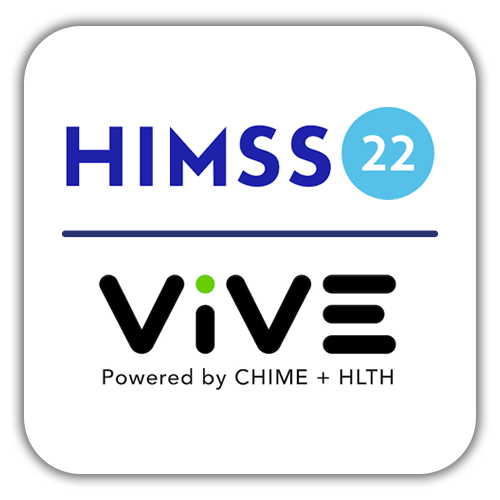With the pandemic waning in the U.S., it is exciting to see more live industry events occurring. This month I attended ViVE and HIMSS, both held in the Sunshine state. Although the healthcare sector has navigated huge challenges during the last two years – seeing tremendous growth in areas like telehealth – storm clouds still hover over the industry.
This blog summarizes my takeaways from both events and identifies some key trends that healthcare systems, healthcare IT companies and the investment community must consider moving forward.
DOES HIMSS HAVE A FUTURE?
The jury is out regarding the future of tradeshows in general, and that clearly includes HIMSS. Bloomberg reports that 84% of large businesses plan to spend less on travel post-pandemic, with most cutting back by an average of 30% as they grow more comfortable with virtual meetings. Many companies are also limiting air travel to reduce their carbon footprint.
Still, there is a distinct value connected to meeting customers in person. It just wasn’t happening at HIMSS. After cancelling the event in 2020, and hosting an impromptu gathering in August 2021, HIMSS drew a decent crowd last week. However, attendance and exhibitor counts were down. When I asked my clients for their take on attendance, estimates were all over the place – ranging from 18,000 to 26,000. Although the turnout was greater than I expected, one exhibitor I spoke with said “Today’s attendance feels like what used to be the on the last day. And it’s only day 2.”
The event was staged on one floor, and I was able to master the lay of the land quickly. During its heyday, it would take several days to cover exhibit booths on multiple floors, including the smaller and less known exhibitors buried in the bowels of the building. Perhaps this event was more equitable in that everyone was together—but it clearly indicated to me that it wasn’t the same event.
It’s possible that some healthcare systems are still limiting employee travel. The lack of buyers at the show produced a recurring rant from many exhibitors frustrated with slow booth traffic. It’s clear that HIMSS is not the only game in town anymore. Although ViVE is a much smaller event, some attendees said they chose one or the other. The crowds were very different; ViVE seemed to draw more strategic personas, versus a more operational attendees at HIMSS. Throw in HLTH (health), held in October, and the competition for travel budgets has increased further. Competition is not a good thing when attendees are questioning the value they receive from traveling to conferences like HIMSS.
At its pinnacle, HIMSS was must-see TV. Fail to attend and you risked the impression of being in trouble or inconsequential. That isn’t the case any longer. At a time when record investment is occurring in health IT, HIMSS is a shadow of itself.
EMERGING AND NON-TRADITIONAL PLAYERS PUT PRESSURE ON THE MARKET
Five years ago, no one could have predicted seeing names like Zoom and Best Buy on the HIMSS exhibitor list. Fast forward to 2022, and there they were.
Zoom was still raising venture funding back in 2017 when it launched a scalable telehealth product allowing doctors to host remote consultations with patients. At that time, no one anticipated the pandemic-induced rush to telehealth that would occur, turning Zoom into a household name.
Similarly, five years ago Best Buy was a struggling electronics retailer where consumers went maybe once a year to upgrade their flatscreen before the Super Bowl. Now, it is parlaying its arsenal of electronics gadgets into the home health sector. In October, Best Buy acquired Current Health for a staggering multiple. The care-at-home technology platform offers remote patient monitoring, telehealth, and patient engagement in a single solution for healthcare organizations.
Bringing quality healthcare into the home has become increasingly important and has accelerated the reliance on the consumer-friendly technology that Best Buy offers, enabling them to play an even more crucial role in bringing virtual care to life.
The message? Healthcare systems should be on the lookout for nontraditional players entering the market with innovative and viable solutions. Begin to consider the benefits of being a first mover in this regard. Healthcare IT firms, meanwhile, need to respond through innovative product development and marketing strategies to stay ahead of emerging competition.
A CHANGE OF DIRECTION: HEALTHCARE IS EXPANDING BEYOND REGIONAL MARKETS
The healthcare sector used to have built-in protectionism when it came to regional markets. Healthcare is still vastly local, but is slowly starting to see a seismic shift. Big box retailers like CVS and Walgreens are aggressively expanding into primary care offerings through thousands of retail locations. This trend began before the pandemic and has ramped up significantly over the last two years.
Healthcare chains entering the market are mobile and agile providers that don’t need to be located geographically close to their patients. Virtual and digital companies can reach into your market and treat people no matter where they are located. It’s a big change and it’s very real. Some healthcare providers are responding by expanding their geographic reach through M&A. Provider companies need to monitor and respond to this trend quickly.
IS A HEALTHCARE REVOLUTION EVEN POSSIBLE?
The presence of fax machine vendors promoting themselves as “innovative digital technology” at HIMSS in many ways captures just how far behind the healthcare sector is (yes there were several, and it’s no longer 1992!) Is this the state of healthcare in 2022? Are there any other industries where ancient technology such as fax machines still play such a major role?
There is still a lot of hyperbole being used by companies. Walking the show floor, I noticed very few taglines that represented clear and distinct messages. Healthcare is still incredibly challenged and backwards when you have fax companies promoting themselves as “innovative technologies.” I didn’t see anything revolutionary at either conference…but I don’t know if healthcare is capable of revolution.






